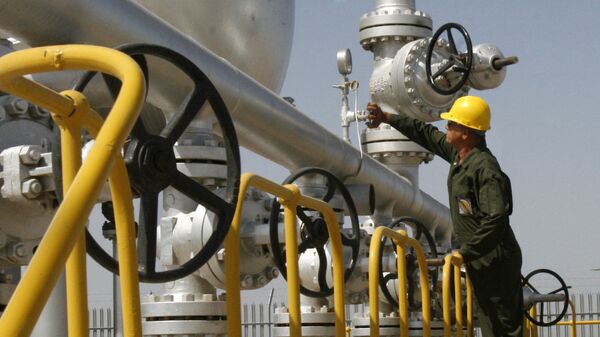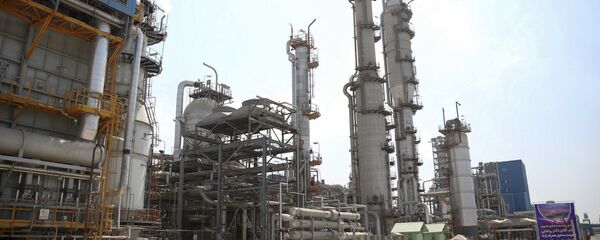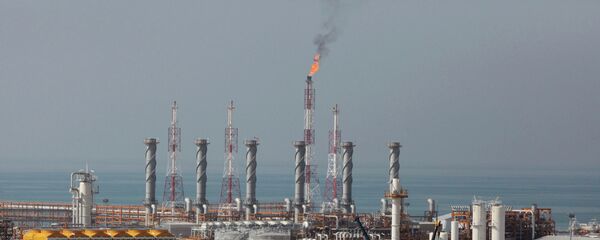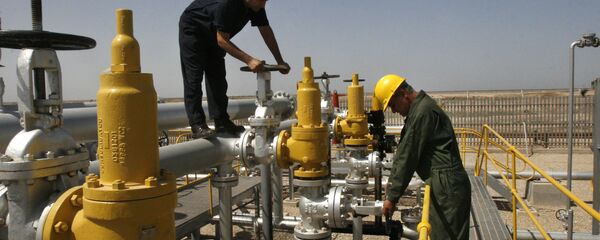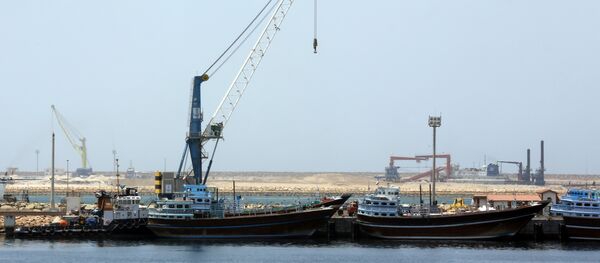Exports of crude and condensate from Iran increased by 12 percent in March, their highest point since before the return of US trade sanctions last November, S&P Platts, an independent energy news agency, reported. In November 2018, Iran's exports slumped to roughly 1.08 million barrels per day (bpd), but last month, they surged to 1.7 million bpd, the publication reported Tuesday, citing Platts cFlow trade flow data.
At this time last year, Tehran was exporting 2.5 million bpd.
On March 21, Reuters found that Iran's exports were actually down for the month, reporting an average of 1 to 1.1 million bpd of exports, citing data produced by its Refinitiv Eikon market data analysis software. However, looking back at its reports in previous months, Eikon's estimates of Iranian oil exports are consistently lower than those provided by Platts cFlow.
Reuters' lower estimates support the narrative that US sanctions are working, and the outlet noted that "the export decline could be another indicator of economic pressure from the embargo."
US Sanctions
Last May, US President Donald Trump unilaterally removed the US from the 2015 Joint Comprehensive Plan of Action (JCPOA), a multinational agreement that placed strict limits on Tehran's nuclear power program designed to prevent it from achieving the capacity to develop a nuclear weapon. In exchange, international trade sanctions against the country were lowered. Three years after it went into effect, Trump claimed Iran had violated that agreement, although no other signatory nor the International Atomic Energy Agency found that to be the case. The other JCPOA signatories have not withdrawn from the agreement and continue to trade with Iran.
However, in August and again in November, the US reintroduced trade sanctions, punishing nations that did business with Iran, especially if they bought Iranian oil. Washington granted waivers to eight countries enabling them to continue importing, but with those waivers due to expire in May, it's unclear what the fate of Iranian exports will be.
In late March, the US special representative for Iran Brian Hook said the Trump administration was "not looking to grant any waivers or exceptions to our sanctions regime," believing that "there are better market conditions for us to accelerate our path to zero" barrels per day of exports from Iran.
However, even the Financial Tribune was forced to admit that this goal is probably unattainable.
"The US will probably fail to reduce Iranian exports to zero, despite renewed talk from the White House about letting all oil import waivers expire in early May," analysts at Eurasia Group said in a research note cited by the Tribune. The experts dissented from Hook's analysis, saying, "the oil market probably cannot absorb the loss of 1.3 million barrels per day of Iranian crude without a significant effect on domestic gasoline prices," which would be a political disaster for Trump.
On April 2, a senior Trump administration official said that with the sanctions, Washington aimed "at continued chilling effect… We want businesses to continue to think doing business with Iran is a terrible idea at this point," Sputnik reported.
That, however, was before Gen. Khalifa Haftar turned coat on Libya's Government of National Accord on April 4, ordering his Libyan National Army to advance on the capital of Tripoli and the major oil export city of Zawiyah, capturing some of the country's biggest oil fields in the process.
Libya, Venezuela Add Uncertainty
"The Europeans have had their eye" on Libya's "sweet" low-sulfur crude oil, which requires minimal processing, "for a very long time," and Haftar is the man they've selected to turn the taps back on, historian Vijay Prashad told Sputnik on Monday.
Oilprice.com noted Monday that Libya's oil sector has rebounded over the past year amid ambitious plans by the country's National Oil Corporation to ramp up production, as well as the relative pacification of the oil field regions.
Hamish Kinnear, Senior MENA Analyst at global risk consultancy Verisk Maplecroft, wrote that the oil fields are dominated by "a complex web of alliances with local militia groups, all of which depend on payments from the LNA." While saying, "There is no reason to expect any immediate impacts from the fighting on Libya's oil and gas infrastructure," Kinnear noted that protracted fighting could drain the Libyan National Army's finances, putting the loyalty of those militias at risk.
The LNA has tried to manipulate oil exports to its own ends, too, attempting to block oil exports last year and seize shipments, temporarily shutting down 850,000 of the country's 1 million bpd exports last July, before arriving at an agreement with the parliamentary government in Tobrouk, whose authority it nominally enforces.
That uncertainty could produce "additional bullish sentiment for oil markets," the publication noted, as could the continued crisis in neighboring Algeria, 85 percent of whose exports are natural gas.
Demand for Iranian heavy sour crude oil in China, India and South Korea has remained steady in recent months amid continual disruption of Venezuelan exports, as the US applies extensive political and economic pressure to the government of President Nicolas Maduro by sanctioning its state-owned oil company, PDVSA, and the numerous power outages caused by what Caracas calls terrorist attacks against the country's main power plant.
Beijing is Iran's biggest oil customer. S&P noted Chinese purchases of Iranian crude increased in March to 627,710 bpd from February's level of 571,464 bpd, and India bought an additional 70,000 bpd for a rate of 350,000 bpd.
Back in January, China's state-owned Sinopec announced a $3 billion deal with Tehran to develop the recently discovered Yadavaran oil field in southwestern Iran.
Oil Production Hits Four-Year Low
That said, production by the Organization of Petroleum Exporting Countries (OPEC) as a whole is at a four-year low, according to the international oil cartel, which counts Iran, Venezuela and Libya as members.
OPEC reported Wednesday that secondary source estimates suggested the cartel had produced 30.02 million less bpd in March, just over half a million less bpd than the previous month and its lowest number since February 2015.
Venezuela's crude production crashed the most, plunging from 1 million bpd to 732,000 bpd, which followed a 472,000 bpd decrease in February as compared to January. The present crisis in that country began January 23, when the US backed an MP named Juan Guaido, who claimed to be the country's interim president and that Maduro's presidency was not democratic.
However, other countries cut production, too, including Iraq and Saudi Arabia, the latter being by far the group's largest exporter. Libya's production actually increased by 196,000 bpd as its largest oil field, Sharara, came back on line.
Iran's production also decreased modestly, falling by 28,000 to 2.698 million bpd. That's still 280,000 bpd less than November's output, though.
Geospatial analytics startup Usra, which tracks oil inventories via satellite data, reported that Iran's crude inventories have decreased by a quarter since the start of the year, meaning the country dipped heavily into its storage reserve. Ursa energy analyst Geoffrey Craig said the move showed Tehran likely didn't anticipate such high exports and might ramp up production again soon.
